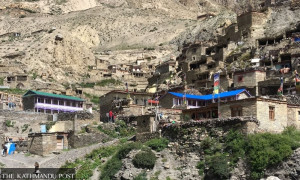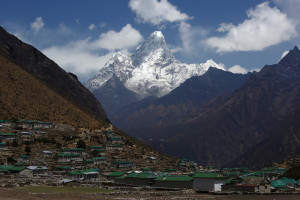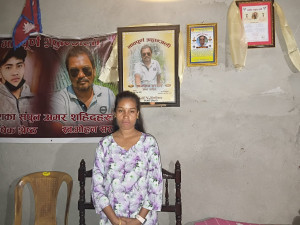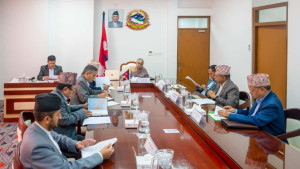National
Nationwide survey next fiscal year to map Nepal’s SDG progress
US aid suspension has stalled key surveys on demography and health, national micronutrient status, and health facility, among others.
Post Report
To assess the country’s latest progress on the Sustainable Development Goals (SDGs), the Nepal Health Research Council is planning a nationwide study in the next fiscal year, 2026-27.
For that, the health research body has decided to complete all necessary preparations within the current fiscal year, including training and orientation to researchers, budgeting, and other groundwork.
“We have been planning a nationwide comprehensive Nepal Health survey, which comprises all the studies we used to carry out separately in the past,” said Dr Meghnath Dhimal, chief researcher at the council. “This kind of study is required to map SDG progress.”
The SDGs, a follow-up on the Millennium Development Goals (MDGs), aim to end poverty and hunger and all forms of inequality in the world by 2030, and Nepal has committed to meeting the goals.
The abrupt suspension of aid by USAID, the principal donor in Nepal’s health sector, has affected multiple programmes, including several health-related studies in the ongoing fiscal year. The Nepal Demographic and Health Survey, the Nepal National Micronutrient Status Survey, the Health Facility Survey, and several others have been halted, which put officials in the dark about the latest developments.
“Comprehensive surveys are needed to assess progress and identify gaps, which ultimately helps us to make the ongoing programme effective and take new measures,” said Dhimal. “We don’t know what is happening regarding the SDG progress at present.”
With no surveys, health officials say, progress in healthcare cannot be tracked.
“We have been relying on data generated years ago,” said Lila Bikram Thapa, chief of the Nutrition Section at the Family Welfare Division under the Department of Health Services. “We cannot achieve our goals without knowing what is actually happening.”
The last Nepal Demographic and Health Survey was carried out in 2022. The Nepal National Micronutrient Survey was carried out in 2016. The 2016 survey had studied the condition of drinking water, sanitation, child feeding practices, dietary diversity, vitamin A supplementation and deworming, iron supplementation, vitamin A and deworming among women, nutrition status of adolescent girls, blood disorders, anaemia, iron deficiency, zinc deficiency, salt consumption, and iodine level among Nepalis.
Officials say that the upcoming study will likewise assess micronutrient status in a representative population. The study report will show outcome indicators of vitamin A supplementation and fortification programmes, which will ultimately help the government and policymakers to formulate policies.
The results of the survey will be crucial for public health. For instance, Vitamin A supplementation and deworming campaigns carried out twice a year—in April and October every year since 2003—are credited with eliminating night blindness among children. Regular supplementation campaigns are estimated to have reduced deaths among Nepali children under five by 23 percent.
Officials said the study will determine whether or not to continue the vitamin A programme.
The 2016 report shows more than two-thirds—68 percent—of Nepalis were consuming iodine in excess of recommended levels, which resulted in a high prevalence of hyperthyroidism.
Salt sold in Nepal is fortified with iodine at 50 ppm (parts per million) per kilogramme of salt, which is higher than the recommended 15 to 40 ppm per kilogram set by the World Health Organisation.
Doctors suspect that excess iodine in salt could be one of the causes of the high prevalence of several non-communicable diseases, including thyroid disorders and hypertension in Nepal.
They also say a change in dietary patterns and increased consumption of processed foods (including packaged soups) have resulted in an increased prevalence of non-communicable diseases such as hypertension and cardiovascular diseases.
A lack of iodine in the diet, on the other hand, can lead to hypothyroidism, where the thyroid gland produces too little thyroxine, leading to the development of goitre.
The Nepal Health Facility Survey was carried out in 2021.
Health officials say that the government has not allocated any money for research and surveys for the ongoing fiscal year, and aid agencies have not committed to investing in data generation. They said the Council’s planning is for the next fiscal year, and if budgets are allocated, the much needed studies will be carried out.
Public health experts say the government must ensure a sufficient budget for independent studies, as these are crucial for assessing the progress of programmes and investments.
“Without real-time data, we will be in the dark about the problems and progress of programmes,” said Dr Shyam Raj Upreti, former director general at the Department of Health Services. “We cannot even make effective public health policies, and this even risks eroding the progress made so far.”




 24.12°C Kathmandu
24.12°C Kathmandu














